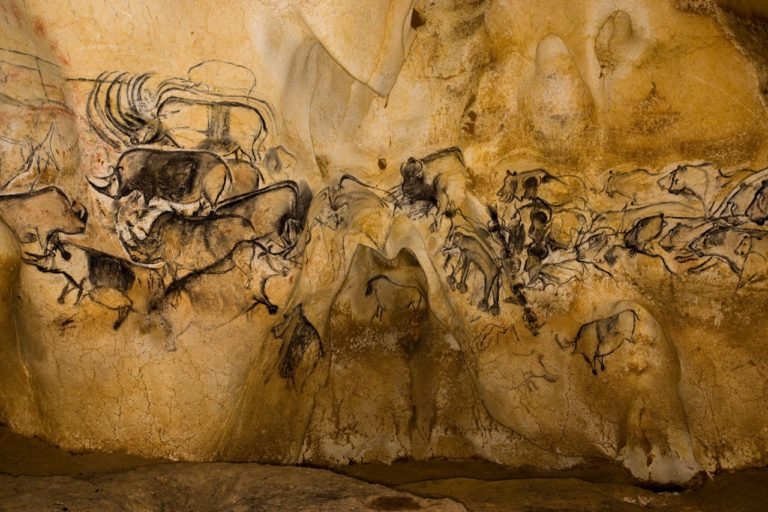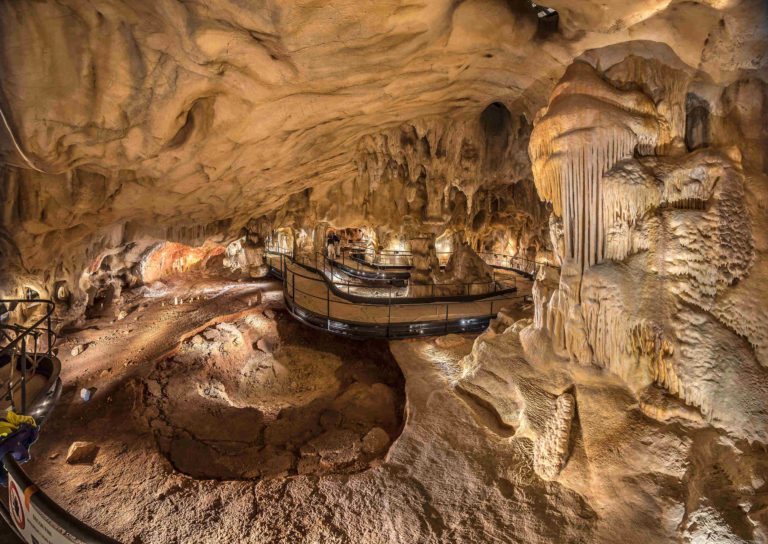Classification : Cultural site presenting the Reproduction of the Chauvet Cave enlisted on the UNESCO World Heritage in 2014.
Managing Organization : EURL Chauvet 2, Operating company of the Chauvet 2 Cave – Ardèche (public service delegated by the Joint Syndicate of the Chauvet Cave Restitution Area)
Presentation :
The Chauvet 2 Cave is unique in the world. This place has both an international cultural dimension and a scientific and technical vocation. The heart of the Chauvet 2 Cave is a replica of the eponymous ornate cavity registered on the World Heritage List since June 22, 2014. About 80% of the parietal figures are reproduced there at scale 1 in an underground environment conforming to the geological decor from the Chauvet cave. This Palaeolithic sanctuary is reproduced in accordance with the original cave allowing an immersion which favors the contextualization of a cave art 36,000 years old. The Replica of the Chauvet Cave is therefore a tool that allows us to understand how the Paleolithics took possession and invested an underground space to make it a real sanctuary where were drawn and engraved narrative systems illustrating beliefs in the form of symbols, mainly animal and geometric. The Replica of the Chauvet cave is accompanied by an interpretation center providing knowledge on the natural and cultural context of the Upper Palaeolithic men who took over the cave, then others throughout the Ardèche valley corresponding to the current gorges.
Finally, Grotte Chauvet 2, in terms of tools, there are also two work rooms dedicated to works, as well as a large exhibition/conference room and a cinema/ conference room (60 seats) equipped with a large projection screen.
Scientific or educational interests :
In general, the theme that can be developed on the site is how and why to use these singular prehistoric underground areas (habitat, burial site, sacred space).
The Replica of the Chauvet Cave : understanding how and why was invested a transformed and partially fitted out cave to include myths of Palaeolithic cultures. The Replica also makes it possible to approach the cave bear, a mammal which occupies a singular place in the bestiary of the Chauvet cave and which has left thousands of imprints in the Chauvet Cave (bones, tracks, sketches, scratches, polish of bear). It is likely that there is a link between the presence of the cave bear and the choice made by our ancestors for a cavity strongly occupied by this giant of the Paleolithic and which could have held an important symbolic place in the human cultures of 36,000 years ago (without slipping into bear worship, very contemporary, and absolutely not demonstrated in the case of Palaeolithic cultures).
In the replica of the Chauvet Cave, other themes can be developed, more geoscientific : karstology, geomorphology, stratigraphy, sedimentology, … Paleontology is also a possible discipline. Finally, anthracology and tracing are possibly affordable themes for students of prehistory and archeology.
Quite naturally, wall art (description, study) is the major theme of the Chauvet 2 cave since the symbolic figures are reproduced on scale 1 and in their context.
Thematic keywords : archeology, paleoclimatology, paleogeography, sedimentology, geomorphology, (pre)-history, hydrogeology, tourism, karstology, paleoclimatology, paleontology, palynology, landscapes, 3D digitization
Keywords typology of sites : fitted out cave, archaeological site, paleontological site, mediation space, unesco
Access modalities :
Possible support : with a mediator

